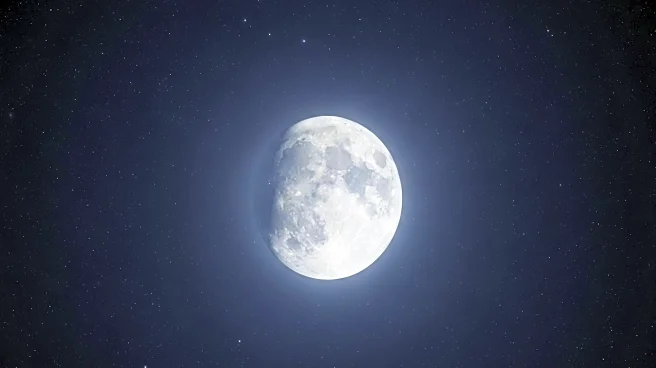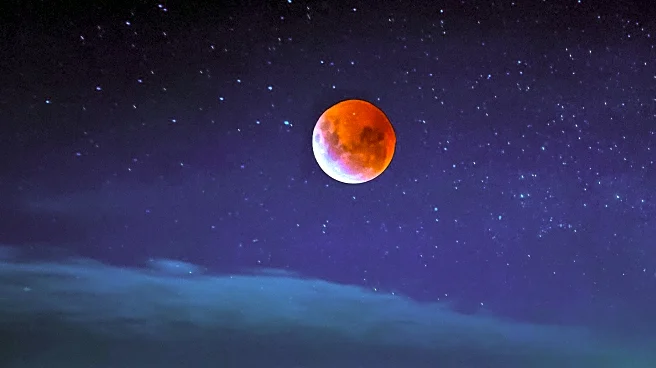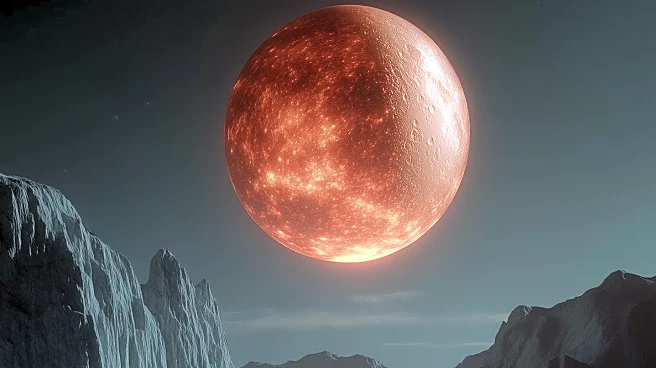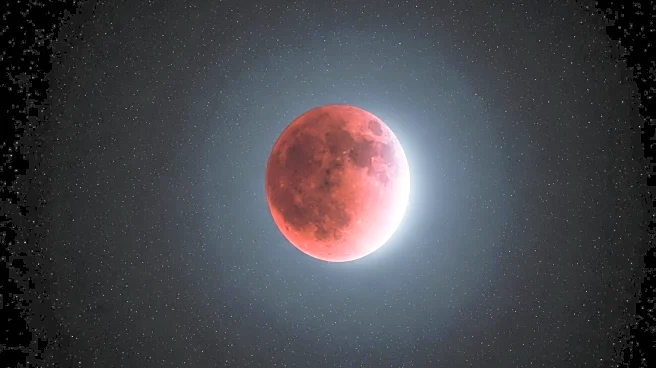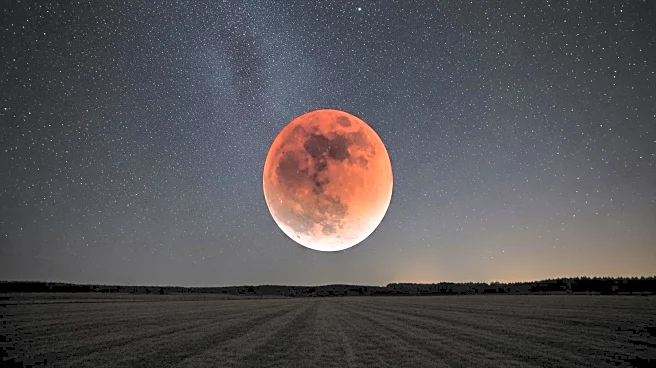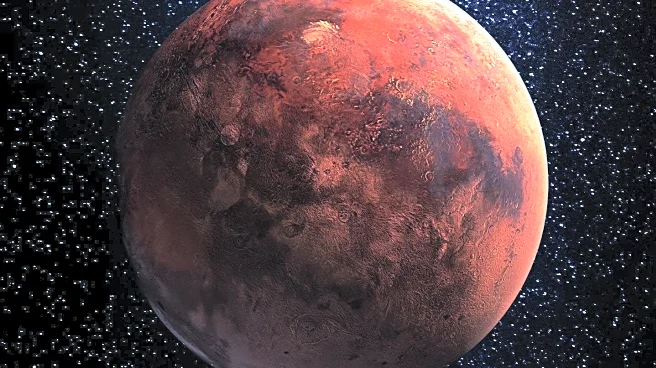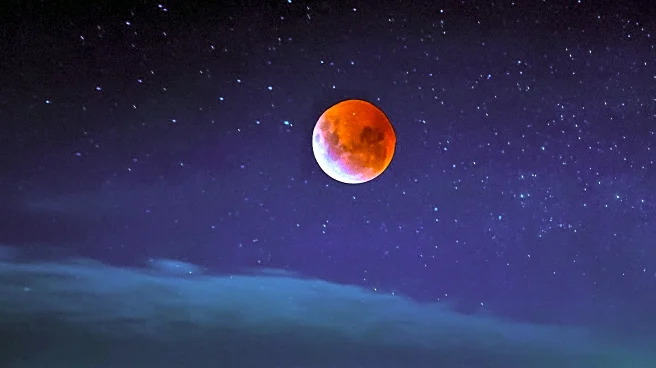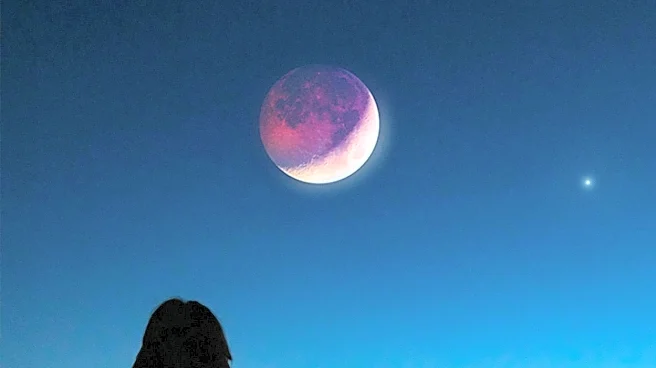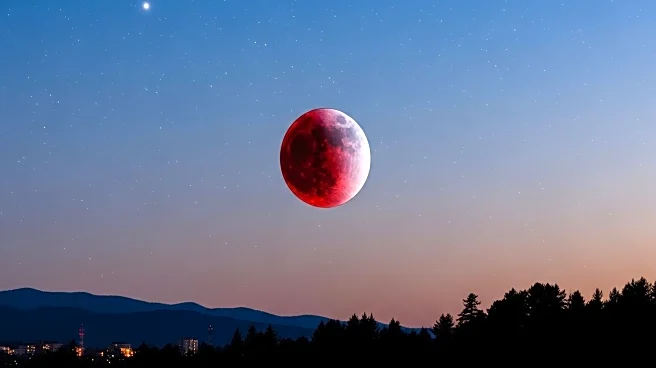What's Happening?
September's full moon, known as the Corn Moon, will reach its peak on Sunday, September 7. Although the moon will be below the horizon at its peak, it will still appear full for several days. This event coincides with a lunar eclipse, which will not be visible in North America but can be seen in Europe, Africa, Asia, and Australia. The Corn Moon is named for its association with the corn harvest season and is also referred to by other names that signify the transition from summer to fall.
Why It's Important?
The Corn Moon and the accompanying lunar eclipse offer a unique opportunity for astronomical observation and cultural reflection. While the eclipse won't be visible in North America, the full moon itself remains a significant event for sky-watchers. The Corn Moon's timing with the harvest season underscores its cultural importance, as it has been historically linked to agricultural cycles. This celestial event also serves as a reminder of the natural rhythms and changes that mark the passage of time.
What's Next?
The next lunar eclipse visible in North America will occur on March 3, 2026. Meanwhile, the upcoming full moons in 2025 include the Harvest Moon in October, the Beaver Moon in November, and the Cold Moon in December. These events provide ongoing opportunities for sky enthusiasts to engage with the night sky and explore the cultural and scientific significance of lunar phenomena.
